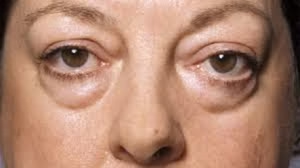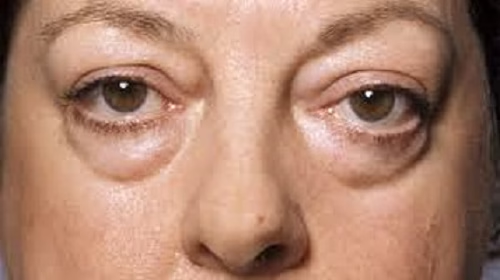

Thyroid Eye Disease (TED) is an autoimmune condition that affects the tissues surrounding the eyes. While it is most often associated with Graves’ disease, an overactive thyroid disorder, TED can also develop in individuals with normal or even low thyroid hormone levels.
TED occurs when the body’s immune system mistakenly attacks the muscles, fat, and connective tissues within the eye sockets (orbits). The same antibodies that target the thyroid gland in Graves’ disease can also affect these eye tissues, leading toinflammation, swelling, and scarring.
The condition typically develops gradually and can affect one or both eyes. Symptoms may vary in severity and can occur in two main phases — active (inflammatory) and inactive (fibrotic).
Typical symptoms include redness and swelling around the eyes, bulging or “staring” appearance (proptosis), grittiness, dryness, or excessive tearing, eyelid retraction (upper lids pulled up), double vision (diplopia), pain or pressure behind the eyes, light sensitivity, and in more advanced cases, blurred or reduced vision.
Assessment for TED involves a detailed examination to evaluate both the level of inflammation and its effects on the eyes and surrounding tissues.
1. External eye changes: The ophthalmologist begins by assessing the overall appearance of the eyes, looking for signs such as bulging (proptosis), eyelid retraction or swelling, redness or puffiness around the eyelids, and any asymmetry between the two eyes. These visible findings help determine the extent of orbital inflammation.
2. Eye movements and double vision: The next step is to evaluate how well the eyes move in all directions. In TED, the eye muscles can become swollen and stiff, which may restrict movement causing double vision. This examination helps identify any imbalance in muscle function. Restriction of upgaze (looking up) is most commonly affected.
3. Corneal and surface health: If the eyes are protruding, the eyelids may not close fully, leaving the front surface of the eye (the cornea) more exposed than normal. This increased exposure can cause dryness, irritation, and discomfort. The corneal surface is carefully checked for signs of dryness, exposure, or early corneal damage, as these require prompt attention to prevent complications.
4. Optic nerve function: In more severe cases, swollen tissues within the orbit can compress the optic nerve and threaten vision. To detect this, the ophthalmologist assesses colour vision, visual acuity, pupil reactions, and, if necessary, visual field testing to ensure the optic nerve remains healthy.
5. Imaging and measurement: Finally, imaging and measurements are often performed to assess disease severity. An exophthalmometer may be used to measure the degree of eye protrusion, and the level of inflammation can be scored using a Clinical Activity Score (CAS). In some cases, CT or MRI scans are ordered to provide detailed images of the orbital tissues. These investigations help determine whether the disease is in the active (inflammatory) or inactive (fibrotic) phase, which is crucial for guiding appropriate treatment.
Treatment depends on the activity level and severity of the condition. The main goals are to control inflammation, relieve discomfort, and protect vision.
Lifestyle and supportive care are often the first steps. Quitting smoking can significantly reduce the severity and progression of TED. Lubricating eye drops or ointments help ease dryness, sleeping with the head elevated can reduce swelling, and sunglasses help protect light-sensitive eyes. Temporary prism lenses may be used to correct double vision.
When the disease is active, medical treatment may be recommended, usually managed by an endocrinologist. This can include medications to reduce inflammation or suppress the immune response, and in selected cases, additional therapies such as orbital radiotherapy. If these therapies fail to address progression in vision loss then surgical decompression of the orbit may be needed.
Surgical treatments, though, are typically reserved for the inactive phase. Orbital decompression surgery can reduce eye bulging and pressure, eye muscle surgery can restore normal eye position and correct double vision, and eyelid surgery can improve lid closure, comfort, and appearance.
Thyroid Eye Disease can fluctuate over time, particularly in the first 12–18 months. Regular follow-up with an ophthalmologist experienced in orbital and thyroid eye conditions ensures inflammation is controlled, vision is protected, and treatment is adjusted as needed.
Copyright © 2023 Nexus Eye Care | Trans4m Business Consulting – Website Design & SEO | Privacy Policy | ^